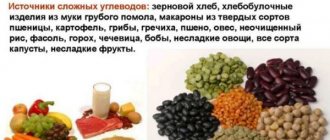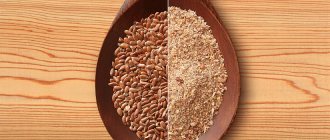Calcium diet: when and to whom is it recommended?
Calcium diet: when and to whom it is recommended
The calcium diet helps provide the body with an increased amount of calcium in cases where there is a reasonable need for it.
therapeutic diets, elderly people (60-75 years old), old people (75-90 years old), pregnancy, women, children, calcium
One of the main reasons for prescribing a calcium diet is a noticeable deficiency of this macronutrient in the body. Often, such a diet is indicated for people who, for various reasons, are at risk of developing a deficiency of this element. Self-administration of a calcium diet without a doctor’s recommendation is undesirable - an excess of calcium in the body will have negative consequences for health.
Harry Benjamin's fairly radical calcium diet is well known. According to this diet, you need to drink a glass of milk every 30 minutes. In addition to milk, you can consume small amounts of prunes and eat fresh vegetables and fruits. There is no scientific data on the benefits of such a diet, but its imbalance is obvious.
What products contain
Before we talk about them, let's talk about the conditions under which Ca will be absorbed best. Let us immediately note what blocks the breakdown processes: food containing oxalic acid. If you eat it and at the same time consume cottage cheese, milk, kefir, you will face the problem of sparingly soluble salts, which can remind you of urolithiasis and are deposited in the intervertebral discs.
It is useful to combine foods containing large amounts of calcium with fatty acids. However, certain precautions must be observed: do not get carried away. Why? The problem is that both a lack and an excess of fat in the body negatively affect the absorption of an important macronutrient - it slows down.
Another tip: add foods rich in vitamin D to your menu. This is another helper of Ca, which helps it get into cells and take part in a number of complex processes. It can be formed under the influence of sunlight, but it is also necessary to obtain it from the diet. Here are the foods that contain calciferol:
- Eggs are one of the simplest and most accessible sources. The concentration of the beneficial substance is especially high in the bright yolk. However, eating too many eggs is harmful because they are high in cholesterol.
- Beef liver is another guest on our table, which contains vitamin D, which helps in the absorption of Ca. And the liver also contains iron and protein - a new argument in favor of inclusion in the diet.
- Soy milk - a cup of this drink has a high content of calciferol. It also contains incredibly useful vitamin C.
- Tuna, salmon - these types of fish are rich not only in the “sun” substance, but also in polyunsaturated fatty acids - a good help for the complete absorption of calcium.
Also, don’t forget about magnesium and phosphorus - they are also vital for obtaining an important macronutrient in full. There are many of them in all kinds of beans, whole grain bread, soybean curd, and cocoa.
Now let's turn to foods that are high in calcium and have great benefits for our health.
- Green leafy vegetables – cabbage comes first. You can safely add Beijing, broccoli, Brussels sprouts to your diet - the treasured Ca will be there everywhere.
- Nuts - you didn’t know, but they also contain building material for nails, teeth, and bones. By the way, they perfectly help the absorption of macronutrients. We all know that these fruits contain a lot of fat under the hard shell. That's what we need. Record holders for the content of useful macronutrients are Brazil nuts and almonds.
- Various seeds - if you were looking for which foods contain calcium and are richest in it, and expected to see only milk and cottage cheese on the list, you will be surprised, because even poppy and sesame seeds contain this valuable substance. You can add them to healthy baked goods made from amaranth flour, and if you are fasting, they will make good milk.
- Wheat – especially high in Ca in bran. But if you decide to look for a macronutrient in premium flour, you’ll just be wasting your time - it’s not there. As in white bread. It’s better to take whole grain bread or buy a good alternative to the usual crust – amaranth bread.
- Tofu - some call this product soy curd, others call it cheese. But whatever you call it, the fact remains: it contains calcium (about 105 mg per 100 g). It is also very good for those losing weight because it contains few calories.
- Molasses – one teaspoon contains approximately 170 mg Ca. This is no joke: it is also found in sweets. However, we still recommend choosing the beneficial combination of maltodextrin and stevia extract over thick starch syrup.
Also, do not forget about cottage cheese, milk, yogurt, kefir. These are the main sources of useful macronutrients on your table. Lactose, which is part of these components of a healthy diet, helps the valuable substance to be quickly and fully absorbed.
So, we found out which foods contain calcium, and gave a list to explain exactly where it is found. Many discoveries can be called unexpected: it is difficult to imagine that the building material for bones and teeth is found in herbs or seeds. There is a lot of it in figs, green beans and even turnip leaves.
Watercress, savoy cabbage, pistachios, shrimp - all these are irreplaceable sources of Ca in our diet. Below is a table listing foods that contain large quantities of calcium. Check yourself: are they all on your table?
Even if you don’t eat all of the above regularly, there is no reason to worry if you regularly drink a glass of kefir or milk, often buy cottage cheese, red fish, and like green vegetables. In this case, all you have to do is ensure that the macronutrient that enters your body is absorbed correctly. We have already told you which combinations are preferable.
It is not difficult to guess that Ca should help us not only throughout life, but also when life is just beginning. This is exactly what we will talk about next.
Yogurt
Yogurt is an excellent source of calcium. Many types of yogurt are also rich in live probiotic bacteria, which have many health benefits.
One cup (245 grams) of regular yogurt contains 30% of the RDA for calcium. It also contains vitamin B2, phosphorus, potassium and vitamin B12.
Low-fat yogurt may contain even more calcium—about 45% of the RDA in one cup.
While Greek yogurt is an excellent source of protein in your diet, it provides less calcium than regular yogurt.
One study linked eating yogurt to improved overall diet quality and improved metabolic health. Subjects who consumed yogurt had lower risks of developing metabolic diseases such as type 2 diabetes and cardiovascular disease.
Yogurt is one of the best sources of calcium, providing the human body with 30% of the RDA for calcium per cup. It is also a good source of protein and other nutrients.
Milk
240 ml of whole cow's milk contains 276 mg of useful mineral, and skim milk contains 352 mg. The same serving of goat milk contains even more calcium - 327 mg.
See Also News
EPA will end animal testing by 2035
Calcium in milk is well absorbed due to the high content of vitamin D - natural or specially added by the manufacturer of the product. Milk is also a source of protein and vitamin A.
Rhubarb
Rhubarb contains high amounts of fiber, vitamin K, calcium and smaller amounts of other vitamins and minerals. It contains prebiotic fiber, which can promote the development of beneficial bacteria in the gut.
Both spinach and rhubarb are high in oxalates, so much of the calcium is not absorbed. One study showed that our body is able to absorb only a quarter of the total amount of this mineral present in rhubarb.
On the other hand, the amount of calcium in rhubarb is quite high. So even if you only absorb a quarter, that would be 90mg per 250g serving of cooked rhubarb.
Rhubarb is high in fiber, vitamin K and other nutrients. The calcium contained in rhubarb may not be completely absorbed, but despite this you still get a significant amount of it.
Mushrooms
They do not contain calcium or contain a very small amount - 0-18 mg.
Soybeans
For those who do not eat meat and dairy products, soy has become a real salvation. It is a source of vegetable protein, which is rich, among other things, in calcium. Pay special attention to tofu and other soy products now, during fasting, to ensure that the body gets enough calcium and protein.
Eggshell
The shell consists of 90–95% calcium carbonate, so a healthy food supplement is prepared from it. You can buy eggshell powder at a pharmacy or make it yourself. Eggs must be washed and boiled, the shells removed from films, and thoroughly crushed in a blender or coffee grinder. The finished powder is mixed with lemon juice or acid to produce calcium citrate, a compound that is easily digestible and suitable for children and the elderly. The daily norm is a teaspoon of the mixture.
Amaranth
Amaranth is an incredibly nutritious pseudograin that is a good source of folic acid and is very rich in several minerals, including manganese, magnesium, phosphorus and iron.
A 250 gram serving of cooked amaranth provides your body with 117 mg of calcium, which is 12% of the RDI.
Amaranth leaves contain even more calcium - a 130 gram serving of cooked amaranth leaves contains 275 mg of calcium, which is 28% of the RDI. The leaves also contain very high amounts of vitamins A and C.
Summary:
Amaranth seeds and leaves are very nutritious. A 250 gram serving of boiled amaranth seeds provides the human body with calcium at 12% of the RDI.
Figs
Dried figs are rich in antioxidants and fiber. Compared to other dried fruits, it also contains more calcium. In fact, 100g of dried figs contains 162g of calcium, which is 16% of the RDI.
In addition, figs also provide the body with a decent amount of potassium and vitamin K.
Dried figs contain more calcium than other dried fruits. When you consume 100 g of dry figs, you get 16% of the daily value of this mineral.
Seaweed
| No. | Name of herbal product | Amount of calcium contained in the product (per 100 g) |
| 1. | Dried agar | 625 mg |
| 2. | Raw agar | 54 mg |
| 3. | Purple | 70 mg |
| 4. | Sea kale | 168 mg |
| 5. | Carrageen (Irish moss) | 72 mg |
| 6. | Undaria pinnate (wakame) | 150 mg |
| 7. | Dried spirulina | 120 mg |
| 8. | Raw spirulina | 12 mg |
Spices and herbs
| No. | Name of herbal product | Amount of calcium contained in the product (per 100 g) |
| 1. | Fresh thyme | 405 mg |
| 2. | Dried spearmint | 1488 mg |
| 3. | Ground black pepper | 443 mg |
| 4. | Ground savory | 2132 mg |
| 5. | Fresh coriander | 68 mg |
| 6. | Dried marjoram | 1990 mg |
| 7. | Fresh parsley | 138 mg |
| 8. | Dried thyme | 1890 mg |
| 9. | Ground red pepper | 148 mg |
| 10. | Dried dill | 1784 mg |
| 11. | Fresh curly mint | 199 mg |
| 12. | Celery seeds | 1767 mg |
| 13. | Fresh dill | 208 mg |
| 14. | Ground sage | 1652 mg |
| 15. | Ground white pepper | 265 mg |
| 16. | Dried oregano (oregano) | 1597 mg |
| 17. | Grape leaves | 363 mg |
| 18. | Dill seeds | 1515 mg |
| 19. | Ground cloves | 632 mg |
| 20. | Dried cilantro | 1246 mg |
| 21. | Cumin seeds | 689 mg |
| 22. | Fennel seeds | 1196 mg |
| 23. | Coriander seeds | 709 mg |
| 24. | Dried parsley | 1140 mg |
| 25. | Bay leaf | 834 mg |
| 26. | Dried tarragon | 1139 mg |
| 27. | Ground cinnamon | 1102 mg |
Importance of calcium diet
Features of calcium absorption Calcium deficiency can be caused by various reasons. As a rule, it is not associated with a lack of calcium-containing foods in the diet, but with disturbances in the process of calcium absorption. It is known that the full absorption of calcium is associated with the presence in the body of a sufficient amount of substances such as magnesium, phosphorus, potassium, vitamin D, vitamin C, inulin, and unsaturated fatty acids. At the same time, an excess of the same magnesium, as well as zinc, phytin, oxalic acid, tannins and proteins interferes with the absorption of calcium.
Disturbances in the functioning of the stomach, intestines, gallbladder, and liver impair the absorption of calcium, so for a number of diseases of these organs, doctors recommend a calcium diet.
Periods of increased need for calcium The need for calcium increases with age, since the rate of its leaching from the body increases, and the absorption process, on the contrary, worsens. Calcium deficiency is observed in the vast majority of people over 60 years of age.
Pregnancy and breastfeeding, childhood are the times when a sufficient amount of calcium in the body is vital. Heavy physical activity, professional sports, sudden weight loss, stress, and alcohol abuse can also cause increased calcium loss, so in these situations a calcium diet can be useful.
A calcium diet is recommended for dental treatment (wearing braces, etc.) and for maintaining cardiovascular health.
How to replenish supplies
Many people believe that it is enough to drink a lot of milk and eat cottage cheese to ensure that there is enough calcium in the body. However, this is not quite true. A diet enriched with calcium will not help if this mineral is not absorbed by the body or is not absorbed completely. For this process to occur most effectively, calcium needs the help of vitamin D. This vitamin is formed in our skin under the influence of sunlight. But in central Russia, nature does not indulge people with fine days, and from the end of October to mid-February the sun hardly appears at all in the sky. All this prevents us from getting as much calcium as the body requires. In adulthood and old age, the situation is further complicated by the fact that brain cells age and cope worse with one of their main tasks - the regulation of hormonal processes. They require special support. This support is primarily provided by the microelements zinc, selenium and copper.
| Products | |
| 250 g yogurt | 450 mg calcium |
| 100 g canned sardines | 300 mg |
| 1 glass skim milk | 300 mg |
| 1 cup stewed cabbage | 200 mg |
| 1 cup baked beans | 160 mg |
| 2 tbsp. spoons of grated cheese | 140 mg |
| 5 pieces. dried figs | 140 mg |
| 1 cup broccoli | 100 mg |
No less important are magnesium, phosphorus, copper, boron and manganese, as well as vitamins B6, C, K and folic acid. They promote the absorption of calcium by bones and connective tissue.
Therefore, proper nutrition that saturates the body with calcium should be varied. It should contain enough fish, various types of cabbage - not only white cabbage, but also broccoli and cauliflower. Easily digestible calcium plus a “set” of useful substances that help this microelement be absorbed are found in beans, legumes, lentils, nuts, sunflower and pumpkin seeds. There is a lot of vitamin D in vegetable oils (olive and flaxseed), as well as in butter. Whole grain breads and cereals are especially rich in fiber.
Principles of calcium diet
- increased consumption of foods rich in calcium;
- reducing the consumption of foods that interfere with the absorption of calcium;
- consumption of foods containing substances that promote the absorption of calcium;
- sufficient fluid intake (at least 1.5 liters per day);
- eating a normal amount of protein (amino acids are necessary for calcium absorption);
- increased consumption of vegetables and fruits (mainly for the sake of calcium itself, as well as potassium, which reduces the excretion of calcium from the body).
Calcium diet products
- First of all, a calcium diet involves increased consumption of milk and dairy products. Digestible calcium is found in yogurt, cottage cheese, and cheeses. At the same time, these products help normalize the intestinal microflora, which is necessary for the absorption of calcium.
- Soy products (such as tofu) also contain adequate amounts of absorbable calcium.
- An excellent source of calcium is some types of fish, canned fish and seafood: shrimp (110 mg/100 g), sardines in oil (420 mg/100 g), sprat, anchovy (350–410 mg/100 g). But river fish with small bones contains only about 10–20 mg of calcium per 100 g of its own weight.
- Some vegetables are rich in calcium, especially celery and olives, lettuce, and various types of cabbage.
- There is a lot of calcium in dried apricots, raisins, almonds, sesame seeds, pumpkin seeds and some other dried fruits, seeds, and nuts.
- Rice contains digestible calcium. Among cereals, semolina is the most neutral in relation to the absorption of calcium.
Authorized Products
Calcium-rich foods included in the diet:
- Milk and fermented milk products: cottage cheese, kefir, fermented baked milk, cheeses, sour cream. Moreover, the higher their fat content, the lower the microelement content. It is believed that to meet the requirement for this micronutrient, you need to consume more than three servings of dairy products daily.
- One serving is considered to be 30 g of cheese, 200 ml of milk (kefir, yogurt), 100 g of cottage cheese, 150 g of yogurt.
- If a person consumes only 1-2 servings, it is necessary to ensure that 600 mg of calcium is taken in the form of the drug. If not consumed at all, then 1200 mg in tablet form.
- Soy and soy products (milk, yogurt, tofu).
- Fish, seafood (especially shrimp), canned fish (sardines in oil, sprats, pink salmon), sprat, anchovy.
- Vegetables - lentils, peas, chickpeas, mung beans, beans, dill, parsley, green onions, lettuce, celery, olives, garlic, red and white cabbage, broccoli. They are best consumed fresh.
- Dried fruits (dried apricots, figs, persimmons, raisins, prunes, dates) can be used as a snack, added to all fruit salads and cottage cheese, or consumed with kefir.
- Seeds and sunflower seeds (sesame seeds, pumpkin seeds and sunflower seeds) and nuts (hazelnuts, pistachios, walnuts, almonds).
- Of all grains, rice has the highest calcium content, but this does not mean that you should only eat it.
Using the table above, you can create a daily diet with a complete content of this microelement.
Table of permitted products
| Proteins, g | Fats, g | Carbohydrates, g | Calories, kcal | |
Vegetables and greens | ||||
| vegetables legumes | 9,1 | 1,6 | 27,0 | 168 |
| zucchini | 0,6 | 0,3 | 4,6 | 24 |
| Brussels sprouts | 4,8 | 0,0 | 8,0 | 43 |
| sauerkraut | 1,8 | 0,1 | 4,4 | 19 |
| cauliflower | 2,5 | 0,3 | 5,4 | 30 |
| bulb onions | 1,4 | 0,0 | 10,4 | 41 |
| carrot | 1,3 | 0,1 | 6,9 | 32 |
| cucumbers | 0,8 | 0,1 | 2,8 | 15 |
| pickles | 0,8 | 0,1 | 1,7 | 11 |
| beet | 1,5 | 0,1 | 8,8 | 40 |
| celery | 0,9 | 0,1 | 2,1 | 12 |
| tomatoes | 0,6 | 0,2 | 4,2 | 20 |
| pumpkin | 1,3 | 0,3 | 7,7 | 28 |
| garlic | 6,5 | 0,5 | 29,9 | 143 |
Fruits | ||||
| apricots | 0,9 | 0,1 | 10,8 | 41 |
| avocado | 2,0 | 20,0 | 7,4 | 208 |
| oranges | 0,9 | 0,2 | 8,1 | 36 |
| watermelon | 0,6 | 0,1 | 5,8 | 25 |
| bananas | 1,5 | 0,2 | 21,8 | 95 |
| pears | 0,4 | 0,3 | 10,9 | 42 |
| melon | 0,6 | 0,3 | 7,4 | 33 |
| lime | 0,9 | 0,1 | 3,0 | 16 |
| lemons | 0,9 | 0,1 | 3,0 | 16 |
| tangerines | 0,8 | 0,2 | 7,5 | 33 |
| plums | 0,8 | 0,3 | 9,6 | 42 |
| persimmon | 0,5 | 0,3 | 15,3 | 66 |
| apples | 0,4 | 0,4 | 9,8 | 47 |
Berries | ||||
| cowberry | 0,7 | 0,5 | 9,6 | 43 |
| grape | 0,6 | 0,2 | 16,8 | 65 |
| strawberry | 0,8 | 0,4 | 7,5 | 41 |
| cranberry | 0,5 | 0,0 | 6,8 | 26 |
| sea buckthorn | 1,2 | 5,4 | 5,7 | 82 |
| currant | 1,0 | 0,4 | 7,5 | 43 |
| rose hip | 1,6 | 0,0 | 14,0 | 51 |
Nuts and dried fruits | ||||
| raisin | 2,9 | 0,6 | 66,0 | 264 |
| dried apricots | 5,2 | 0,3 | 51,0 | 215 |
| dates | 2,5 | 0,5 | 69,2 | 274 |
| prunes | 2,3 | 0,7 | 57,5 | 231 |
Cereals and porridges | ||||
| buckwheat (kernel) | 12,6 | 3,3 | 62,1 | 313 |
| cereals | 11,9 | 7,2 | 69,3 | 366 |
| corn grits | 8,3 | 1,2 | 75,0 | 337 |
| pearl barley | 9,3 | 1,1 | 73,7 | 320 |
| millet cereal | 11,5 | 3,3 | 69,3 | 348 |
| white rice | 6,7 | 0,7 | 78,9 | 344 |
| barley grits | 10,4 | 1,3 | 66,3 | 324 |
Raw materials and seasonings | ||||
| honey | 0,8 | 0,0 | 81,5 | 329 |
| milk sauce | 2,0 | 7,1 | 5,2 | 84 |
| sour cream sauce | 1,9 | 5,7 | 5,2 | 78 |
Dairy | ||||
| milk 1.5% | 2,8 | 1,5 | 4,7 | 44 |
| kefir 1% | 2,8 | 1,0 | 4,0 | 40 |
| sour cream 15% (low fat) | 2,6 | 15,0 | 3,0 | 158 |
| curdled milk | 2,9 | 2,5 | 4,1 | 53 |
| acidophilus | 2,8 | 3,2 | 3,8 | 57 |
| yogurt | 4,3 | 2,0 | 6,2 | 60 |
Cheeses and cottage cheese | ||||
| cottage cheese 0.6% (low fat) | 18,0 | 0,6 | 1,8 | 88 |
Meat products | ||||
| boiled beef | 25,8 | 16,8 | 0,0 | 254 |
| boiled veal | 30,7 | 0,9 | 0,0 | 131 |
| rabbit | 21,0 | 8,0 | 0,0 | 156 |
Bird | ||||
| boiled chicken | 25,2 | 7,4 | 0,0 | 170 |
| turkey | 19,2 | 0,7 | 0,0 | 84 |
Eggs | ||||
| chicken eggs | 12,7 | 10,9 | 0,7 | 157 |
Fish and seafood | ||||
| dried fish | 17,5 | 4,6 | 0,0 | 139 |
| smoked fish | 26,8 | 9,9 | 0,0 | 196 |
| canned fish | 17,5 | 2,0 | 0,0 | 88 |
Oils and fats | ||||
| corn oil | 0,0 | 99,9 | 0,0 | 899 |
| linseed oil | 0,0 | 99,8 | 0,0 | 898 |
| olive oil | 0,0 | 99,8 | 0,0 | 898 |
| sunflower oil | 0,0 | 99,9 | 0,0 | 899 |
| ghee | 0,2 | 99,0 | 0,0 | 892 |
Non-alcoholic drinks | ||||
| mineral water | 0,0 | 0,0 | 0,0 | — |
| lingonberry juice | 0,1 | 0,0 | 10,7 | 41 |
| green tea | 0,0 | 0,0 | 0,0 | — |
Juices and compotes | ||||
| apricot juice | 0,9 | 0,1 | 9,0 | 38 |
| carrot juice | 1,1 | 0,1 | 6,4 | 28 |
| pumpkin juice | 0,0 | 0,0 | 9,0 | 38 |
| rose hip juice | 0,1 | 0,0 | 17,6 | 70 |
| * data is per 100 g of product | ||||
Prohibitions and restrictions
You should exclude from your diet foods that contain substances that interfere with the absorption of calcium or enhance its excretion. This primarily applies to alcoholic beverages, coffee, carbonated drinks, refined sugar and table salt. Sorrel and spinach, rich in oxalic acid, should also be excluded.
It is undesirable to consume large amounts of grains, cereals, nuts, and legumes that contain phytin. Bran, oats, peanuts, bread, beans and peas should be consumed in small quantities. Excess protein leads to impaired absorption of calcium, so there should not be too much of these nutrients in the diet.
Calcium in foods
For most people, a balanced diet is enough to get the required amount of calcium per day.
Calcium in dairy products is the most reliable source, as it is most easily absorbed by the body. Photo by donald modeste / Unsplash
Bioavailability of calcium
The amount of mineral that enters the body differs from the amount in the product. How much calcium the body actually absorbs and uses is called “calcium bioavailability.” For example, its bioavailability in milk is about 30%. This means that if one glass of milk contains about 300 mg of calcium, the body only uses about 100 mg.
Table of high calcium dairy products:
| Product | Calcium content (mg)/100 g |
| Cheddar cheese | 739 |
| Brie cheese | 256 |
| Whole milk yogurt | 200 |
| Skimmed milk | 160 |
| Whole milk | 118 |
| Goat milk | 100 |
People with lactose intolerance should add more plant sources of calcium to their diet, as they also contain fiber. But while plant-based foods generally contain more calcium than dairy products, the bioavailability of calcium is lower. Moreover, some plant products contain antinutrients - substances that reduce the bioavailability of the mineral.
You can find out how your body copes with the breakdown of lactose using the Atlas Microbiota Test.
Foods and drinks of plant origin that reduce the bioavailability of calcium:
| Legumes: some varieties of beans, peas, chickpeas | Potatoes and sweet potatoes |
| Green leafy vegetables: spinach, chard, sorrel | Nuts and seeds |
| Whole grain products | Tea, coffee and other caffeinated drinks |
But this does not mean that these foods should be excluded from the diet - they contain other nutrients beneficial to the body. First, you can eat foods with calcium separately from foods that reduce its bioavailability. Secondly, some cooking methods such as soaking or fermentation reduce the amount of antinutrients in foods. Also, in many countries, manufacturers fortify such products with calcium and other important nutrients and vitamins.
Everything you need to know about fiber
Bioavailability of a nutrient is the amount that the body actually absorbs and uses.
In some cases, doctors may recommend taking calcium supplements or vitamins with calcium.
Nuances
- It is advisable not to drink liquids rich in caffeine and tannins. Preferred water is slightly acidified with lemon, mineral (calcium) water, fruit juices (for example, orange).
- Vegetables and fruits should be consumed raw whenever possible.
- There are no special recommendations on cooking methods, food temperatures and diet - it is enough to follow the general recommendations for a healthy diet.
Expert: Natalia Dolgopolova, general practitioner Author: Natalia Bakatina
The material uses photographs belonging to shutterstock.com










